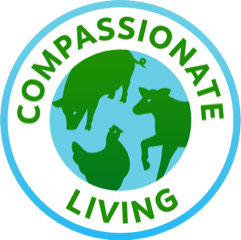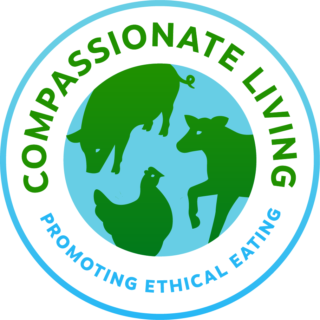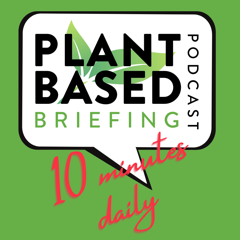Podcast Transcript
Hope
Welcome to the Hope for the Animals Podcast, sponsored by United Poultry Concerns. I’m your host, Hope Bohanec and you can find all our past shows, including the 9 previous Reason for Vegan podcasts in this series, by going to our website, HopefortheAnimalsPodcast.org.
This is a series of shorter bonus episodes where I focus on specific aspects of the reason that we are vegan, the reason to be vegan. I think this particular one might be a little longer than the others. But there are 9 others in the series now covering many different aspects of animal agriculture, focusing in on different species and what they endure in food production, so when you’re finished with this one, if you haven’t already, I would encourage you to go back and listen to the other Reason for Vegans as well.
This podcast will be focused on the ecological cost to the planet of our choice to eat meat, eggs, and dairy. I’m going to get into a lot of science and studies, and I want to start by saying that I only use good scientific and academic peer-reviewed sources. I’m not going to cite them all as I would in an article but I do have the sources so if you’re interested or you hear some science that you’d like to get the information about, I can send you a link, just let me know. I also like to use meta-analysis and I’ll use a lot of meta-analyses here. That means basically just not relying on one study but using metadata from organizations that have looked at a body of science on a subject over a certain amount of time and then they’ve come to a conclusion based on the results of numerous studies. The UN is a good example of that. So I’ll be using metadata, and this is really a broad topic. There is so much information out there on the environmental impact, and I really encourage you to research further if you’re interested in the topic. We have some great information on the UPC website on this subject, so you can check that out at upc-online.org.
I also want to offer a disclaimer about the use of the word, “livestock.” I really don’t like this term. I feel that it diminishes the individuality of animals, it reduces them to a commodity. But this is the language that’s used in much of the scientific community, so I may, you know, when I’m quoting or paraphrasing information and scientific studies, I may use the term, “livestock.” So just know that we should try to move away from using these terms, but in this instance when I’m quoting a lot of science, I might use it.
This is a topic that vegans should care deeply about. Not only do we want a livable planet for humans, but vegans care about all animals and we are destroying the homes of wild animals with our pollution and climate disruption. So we should, of course, care about wildlife, just as much as we care about farmed animals.
I want to start with some good news, which is that what someone chooses to eat and drink is the single biggest determining factor in their overall ecological footprint. What that means is that it is actually easy and affordable to make the biggest impact. You don’t have to make expensive changes like getting solar panels or buying an electric car. If you can do those things, that’s great, you absolutely should, but many of us, of course, can’t afford to make those kinds of changes, but the changes in what we eat have the most dramatic consequences for our personal impact. What we put in our bags at the grocery store can be even more impactful than if we remember to bring a reusable bag or what we drove to the store. People don’t realize the power of their plates when it comes to environmental impact.
Okay, let’s get into it. According to the EPA, the Environmental Protection Agency, and numerous, numerous other global governmental bodies and agencies, and tons and tons and tons of research, we now know that the hazards associated with animal agriculture include greenhouse gas emissions that are causing climate disruption, massive energy and fossil fuel consumption, deforestation, water waste, water pollution, topsoil erosion, habitat loss, species biodiversity loss, wasting of resources, food, and grain. It’s a huge impact that animal agriculture has and I don’t have the time or bandwidth here to get into everything, but I’m going to unpack a few of these issues.
Climate disruption, of course, one of our most pressing and really time-sensitive issues, because we are running out of time to turn this thing around. According to the United Nations, animal agriculture currently emits more greenhouse gas emissions than all the world’s transportation combined. There are so many studies and reports that strongly urge a global shift to a plant-based diet to mitigate all kinds of environmental catastrophe, but in particular, climate change.
Energy consumption is a huge factor in animal agriculture’s impact. There are massive amounts of energy wasted in industrial farming. The slaughterhouse and processing plant, these are indoor environments with conveyor belts and milking machines and lighting and heating and the mechanized slaughtering process, mechanized milking machines. And the transportation often has many more stages to it for animal agriculture compared to plant foods. So there’s the grain brought to the animals, animals to auction, the animals to slaughter, carcass to processing, product to market, all of these can be numerous different steps using tons of fossil fuels compared to plant farming where it’s the farm to the processing plant to market and that’s pretty much it. It takes eight times as much fossil fuel to produce animal foods as it takes to produce plant foods. And even the least efficient plant foods are nearly 10 times as efficient as the most energy-efficient animal foods. What do I mean by that? They do life cycle assessments of foods all the time where it’s seed-to-plate for plant foods, inception-to-plate for animal foods, and they calculate the carbon footprint and other energy use and effects. And time and again, plant foods always are lower in emissions and have less impact on the environment. For example, let’s say you’re at the store, and you want to get a tomato, and you go for an organic tomato and you see that it’s from Mexico, and you think, “Oh my goodness. That’s a lot of food miles and had to come really far. Maybe this local organic dairy product would have less impact.” Well, no, because it is an animal product and animal products are heavy on production. Even though it’s local, even though it may be organic or have other sustainable labels on it, again and again, animal foods are seen and calculated as having a much higher impact than any plant foods, conventional and otherwise.
A study out of the University of Chicago found that consuming no animal products is 50% more effective at fighting climate change than switching from a standard car to a hybrid. In thinking about driving, you can think about eating carbon consciously this way. A meat-centered diet is like driving an SUV, it’s the worst you can do. Vegetarian diet, a little better, is maybe like driving a midsize car. But if you’re eating vegan, it’s the equivalent of biking or walking, the equivalent of not driving at all. That’s how much impact you can have.
So often when we’re talking about these environmental impacts, we blame the cows, and we hear about beef and dairy as being the worst culprits, the worst problems. First, I want to say that it’s not the cow’s fault, of course, it’s humans’ fault for exploiting animals, but all the environmental destruction that I’ve been talking about, they apply to all animal products, not just cows. Chicken farming is absolutely impactful too and just switching from beef to chicken is not the answer. And it’s so frustrating to hear that messaging because it’s really like comparing rotten apples and oranges. Just having hundreds of millions of birds, concentrated in these areas, causes water pollution, air pollution problems, greenhouse gas emissions, much higher than the equivalent calories of plant foods. Water, for example, in dairy farming takes three times the water to produce compared to vegetables and grains and beans, but for eggs, it takes 10 times the amount of water, and chicken meat is 14 times the amount of water. So a ton of water is wasted in chicken meat and egg farming. There’s a huge water pollution problem as well. Poultry production waste causes eutrophication of the water, and I’ll explain what that is.
A one million hen complex, which is not unusual, produces 125 tons of wet manure a day, which runs off into our groundwater and adds high nitrogen and other nutrient levels to the water system. It runs into the groundwater into our waterways like lakes and rivers and streams, and that causes algae growth, it depletes the oxygen in the water, and these areas are called dead zones, and that is eutrophication. It’s these oxygen-depleted waters, and chicken farms are a huge cause.
Another contributing factor is the bedding used on the floor systems in these chicken-producing areas. It’s like a poultry litter, kind of wood shavings and other materials that they use on the floor. So broiler chicken houses where they are breeding the chickens for meat, breeding facilities chickens that are kept to lay the eggs for hatching, and now all the cage-free egg-laying buildings, birds are kept in these floor systems and it’s 1000s and 1000s sometimes 10s of 1000s of birds in large windowless warehouses all on the floor. And these shavings, they build up with high concentrations of feces. chemicals, bacteria, parasites, pathogens, viruses and pharmaceuticals, and then there are birds that were so sick and diseased and injured that they just died, so there are dead diseased carcasses that are all just scooped up piled up in this bedding and dumped somewhere on the farm. And that runoff from that bedding goes into the groundwater and then into our waterways. And again, it contains harmful levels of nitrogen and phosphorus and ammonia, and other nutrients that poison the water and create these dead zones. There was a comprehensive study into which areas in the US were experiencing the worst water contamination from agriculture and meat industry corporations. The worst offender that had the most destructive agricultural impacts was Tyson Foods, and of course, Tyson is predominantly chicken meat manufacturing.
There’s also a terrible waste of resources happening with animal agriculture, and we often think of ourselves as humans as being the overpopulated species that are wasting all the resources and eating up all the world’s resources. Well, the animals that we breed for food, on average, outweigh the US human population by about five times. They are the truly overpopulated species. For every one kilogram of animal protein produced, farmed animals are fed about six kilograms of plant protein. The US farmed animal population consumes more than seven times as much grain as is consumed directly by people in the US, so there’s a massive amount of plant food wasted. It’s enough to feed the entire human population of a country five times. Such a huge waste of food when we have so many people hungry.
There’s a huge waste of water as well. Most of our agricultural irrigation is used in animal agriculture. There’s excessive water use in animal farming. There’s the irrigation for the feed crops to feed the animals, then there’s watering the animals directly, and then there’s all the factory usage, washing all the equipment, washing down the slaughterhouse and the milking parlors. Producing one kilogram of animal protein requires about 100 times more water than producing one kilogram of grain protein. Another way to look at it, the same amount of water produces 16 pounds of grain or one pound of meat. So much wasted water.
There’s also natural habitat destruction, land use, deforestation, topsoil erosion, loss of biodiversity. Deforestation, according to the UN, the Amazon and the Amazon cattle ranching is now the primary reason for deforestation. And it’s not only to graze the cows, but it’s also to grow grain and feed that are fed to the animals, not only cows but all farmed animals. Large-scale dietary change to a plant-based diet could actually reverse deforestation. In the US, over 400 million acres of pasture and rangeland could be reforested and rewilded if we didn’t eat animals. Hundreds of millions of additional acres go to growing the feed that we feed to the farm animals and most of that could be reforested as well.
And of course, forests, trees, brush, bushes, these all absorb carbon from the atmosphere. Anytime there’s a green space and things are growing, it’s a carbon sink, we’re pulling carbon from the atmosphere and that reverses climate change. So, this could be a huge help, having these hundreds of millions of acres rewilded. It could fight climate change and reduce emissions.
So talking about loss of habitat and species and biodiversity, globally, animal food production and grazing is one of the leading causal factors in the loss of biodiversity and a key factor in the loss of species in wild places. And within certain regions in the US, livestock grazing is listed as the number one cause of species being federally listed as threatened or endangered. So there is now a trend, push to have more grass-fed and free-range animals, and the thinking goes that getting the animals out of the building and onto the land is going to be better environmentally but really, it’s the opposite. Now we have the same number of animals using much more land, and that just increases those hundreds of millions of acre numbers that I just talked about. That’s increasing that number. We need to be decreasing that number.
And having cows and sheep and pigs out on acres of land, it causes conflict with wildlife. It creates a war on wildlife that’s been going on for centuries ever since we’ve been grazing animals here in the US. Something that happens because of this conflict with wildlife is predator control. And predator control, there’s even a government agency called Wildlife Services. The ranchers can call and they will come out and set poisons and traps and shoot animals. Just shoot them if there are any predators in the area that are not even threatening the animals in the area. And then the poisoning and trapping which is indiscriminate killing of non-target species, sometimes a lot of times. A mother raccoon might get caught in a trap, and now she’s unable to get back to her babies in the den and they starve to death, she dies of extreme distress trying to get out of the trap and back to her babies. It’s just horrible. Fencing is another issue with getting animals out into pasture areas. It disrupts wildlife migration. There’s so much more conflict with wildlife to happen with an increase in free-ranging animals.
There’s an interesting example of this happening in the Point Reyes National Seashore. It’s near my area, about three hours west of me, about an hour and a half north of San Francisco on the coast, and this area is home to an endangered elk called the Tule Elk. There are only about 500 elk left in the park, and dairy and beef cows outnumber the elk 10 to one. Ranchers don’t want the elk eating their grass and drinking their cows’ water. So, now, for-profit privately owned beef and dairy businesses threaten the wildlife in a public National Park. They’re trying to separate the elk from the water sources and trying to kill them. The cows are dumping millions of pounds of feces and urine into the land and soil and water and Bay and Pacific Ocean. This issue has really gotten the attention of both the animal rights community and environmentalists who are now working together to try to get the dairy farms out of this national park so the Tule Elk can thrive once again. But this example of the constant conflict with wildlife could easily be ended if we simply switched to healthy plant-based eating.
So what about those eco-labels that we’re seeing on some animal products like sustainable and organic and grass-fed? A lot of these labels are straight greenwashing. There is no significant change to the environmental impact of that product or no change at all. There are some situations that might be slightly better but even these can be problematic in other ways. And if you’re comparing to plant foods, plant foods always win. They’re always better for the environment, no matter the label on an animal product. These labels are woefully unregulated. You won’t know the difference, whether it’s better, worse, whatever, because the farmers can tell you whatever they want on their websites and in their marketing.
A great example of how these labels can actually be even worse is grass-fed beef. We’re now learning that grass-fed beef can produce 50 to 60% more greenhouse gas emissions than they’re grain-eating cousins. Studies at both Oxford and Harvard University found that grass-fed beef produces higher emissions than conventional beef. There’s more water wasted as well because the animals are moving around and drinking more. So grass-fed beef can take 18 to 24 months longer to get the animals up to market weight so that greatly extends the amount of time that they are alive, burping greenhouse gases, drinking clean water, creating pollution.
A study at Washington State University conducted a comprehensive comparison of conventional feedlot cattle and grass-fed cattle, and they found that to produce a set quantity of beef, the conventional feedlot product required the least land, the least water, the least fossil fuels, and produce the least greenhouse gases, compared to the grass-fed. So this push that we’re seeing to switch to free-ranging animals, grass-fed, even rotational and short-duration grazing which are these new methods of grazing animals that have become very popular and kind of the darlings of the locavore and foodie movements, these could be even more devastating on the environment. Free-range and organic farms require more land for the same amount of animals. Think about the chicken house we were talking about, those chicken buildings that have 10s of 1000s of birds in them. Now, let’s say that the farmer wanted to switch to free-range and wanted to give all those birds the space for even just a semblance of a natural life, give them a bit more space. That chicken building sits on probably an acre of land or less. He would need dozens and dozens and dozens of acres to be able to free-range all those birds. So now, as the demand for these alternative products grows, we’re going to see the need to destroy wetlands and forests and prairies, and other wild areas to accommodate these local farms. These methods of farming have the potential to increase the damage to biodiversity as more open spaces will be required to accommodate these animals.
So here’s another great example, there’s a beef and pork farm in Petaluma, California, and on their website, they claim that they give their animals 10 acres per cow and 50 acres per 10 pigs. So that’s 60 acres for 11 animals. There are 60,000 people in Petaluma. How on earth could they feed all the people of Petaluma with their meat or the equivalent farming methods? It just simply can’t be done. There’s not enough space to accommodate all these local, free-range animals and have it include meat. It’s just not sustainable. It’s been estimated that we would need closer to five planet Earths to be able to switch over to this free-ranging and local diet. The tiny amount of free-ranging that we do right now, it can’t be scaled up to feed the billions of people on the planet. Free-ranging animals for food can never be more than a specialty market for a few elite buyers.
There’s so much more to this, and if you want to learn more. I recommend my book, The Ultimate Betrayal. I go into great detail about sustainable and alternative labeling and the environmental impact of animal products. And I’ll probably do a full episode on greenwashing our food in the future, so look for that.
I’m going to wrap it up here. It’s really hopeful that the environmental community is finally waking up to this and finally making this connection. I was going through some old files and I saw an article that I wrote on animal agriculture’s impact on global warming, that’s the term we mostly used decades ago, and the date on it was 1996. We have been talking about this for a long time. But finally, we’re seeing an awakening in the environmental community and it’s heartening to see young environmental activists proclaiming that they’re vegan, like, Greta Tunberg. And I really knew things were changing when I saw a Time magazine article, it was just a few months ago, and it listed the personal actions that we can take to reduce our carbon footprint. And they listed reducing or eliminating meat consumption as the first thing. And I think it wasn’t only meat, and I think they said animal products so they included dairy and eggs. This wasn’t even on the mainstream radar, just a few years ago, it would have been the last thing or not mentioned at all. So things are really changing.
So I would like to recommend a couple of films if you’re interested in learning more and want to watch a film on these issues. There’s Countdown to Year Zero and EndGame 2050. Both are available on Amazon Prime, and I’ll put a link to those two films in the show notes. I think you can watch them on other platforms as well if you don’t have Amazon Prime. I’d also like to recommend my book, The Ultimate Betrayal. I have an extensive environmental section in there and I’ll wrap up the podcast with this quote from my book, “Reducing or eliminating the consumption of animal products is the most powerful way we can reduce our impact on the environment. We must start thinking and acting beyond convenience and tradition and evolve to be honorable global citizens, concerned for the state of our planet. A vegan diet is by far the most positive ecological choice we can make.”
Thank you for listening to the Reason for Vegan Series. If you found this information important and inspiring, please share it on your social media platforms and take action today for the future of the planet, and live vegan.




